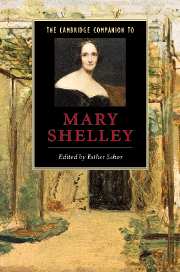Book contents
9 - Falkner and other fictions
from Part 2 - Fictions and myths
Published online by Cambridge University Press: 28 May 2006
Summary
The trouble with “men as they are”
“I am now writing 'Falkner,'” writes Mary Shelley in her journal for June 7, 1836. “My best it will be - I believe” (J I 548). What could she have been thinking, a modern reader might well ask. The identifying moral qualities of her characters appear immediately, and the “roundness” that Forster praised as being “capable of surprising in a convincing way” and which the novel as a genre has cultivated, is nowhere to be found. Yet Shelley was optimistic during the conception and execution of this, her last long work of fiction. Writing to her publisher, Charles Ollier, in January 1836, she told him she had had
no intention of writing another – but in consequence of what you said, I began to reflect of the subject – and a story presented itself so vividly to my mind that I began to write almost directly – and have finished one volume . . . It is in the style of Lodore, but the story more interesting & even, I should think, more popular.
(L II 263)Not only did she write the book “with a rapidity [she] had never done before” (L ii 267), but in a letter to her fellow novelist Edward Bulwer-Lytton, she remarked that “it is not always the most studied & (consequently) the favourite works of an author that are his best titles {to} fame . . . but the flower that springs to bloom most swiftly is the loveliest” (L II 296).
- Type
- Chapter
- Information
- The Cambridge Companion to Mary Shelley , pp. 151 - 162Publisher: Cambridge University PressPrint publication year: 2003
- 1
- Cited by

